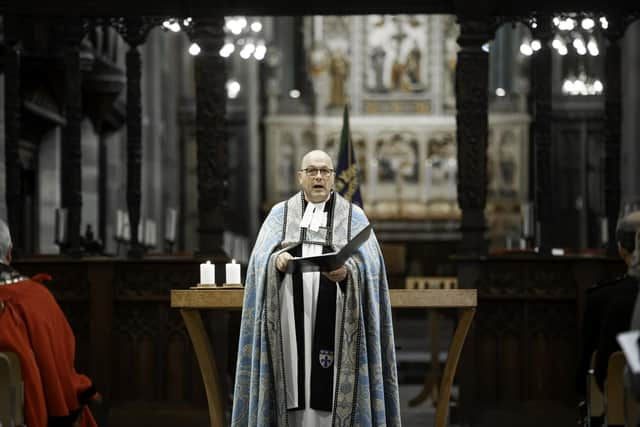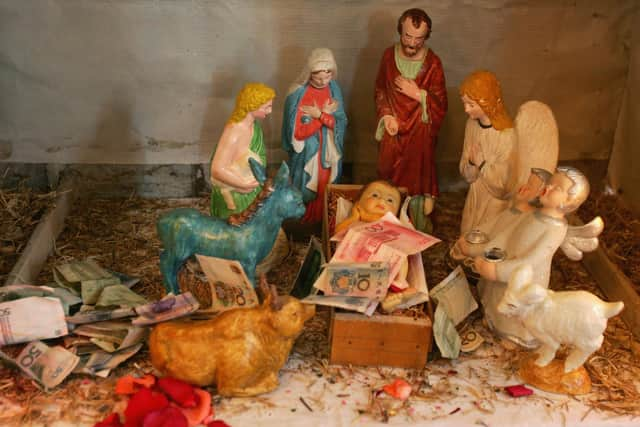The Dean of Wakefield reflects on 2022 and sends a festive message this Christmas Day
and live on Freeview channel 276
Wakefield Cathedral is privileged to own a wonderful nativity scene crafted by Austin Wright, a Welsh sculptor who spent the whole of his working life in Yorkshire until his death in 1997.
The Wakefield Nativity as it is called, which will be on display in the cathedral throughout the Christmas period, is a modern take on a very old tradition.
Advertisement
Hide AdAdvertisement
Hide AdSt Francis of Assisi in the early thirteenth century is credited with creating the first nativity scene - or prespe in Italian – complete with live animals and people.


He used it as a teaching aid in his sermons to emphasise the very humble circumstances of Jesus’s birth: in an animal’s stable and placed in a manger – a feeding trough – in the absence of a proper crib.
Since then the nativity scene has become a staple ingredient of Christmas celebrations throughout the world - not least in churches whose crib scenes are often dedicated at one of the Christmas services (as the Wakefield Nativity was at our Midnight Mass on Christmas Eve).
The tradition of the presepe is especially rich in Naples. In the city’s Via San Gregorio Armeno, craftsmen and craftswomen in dozens of ‘nativity workshops’ create wonderful crib scenes that attract the attention of hundreds of thousands of tourists throughout the year.
Advertisement
Hide AdAdvertisement
Hide AdWhat is especially striking about these crib scenes is that they frequently include characters whom you would never find in the lists supplied by St Luke or St Matthew in their accounts of the birth of Jesus.


Here you might see Madonna, the singer rather than the mother of Jesus, complete with her microphone and questionable dress sense; there you might glimpse the footballer Diego Maradona (complete with the ‘hand of God’ that did for England’s World Cup chances in 1986); there are bakers loading pizza ovens, or (self-referentially) merchants selling miniature crib scenes. All human life is here.
Although it might at first sight seem odd, not to say anachronistic, to see such contemporary figures in a crib scene, their presence (perhaps quite unintentionally) makes an important point: Jesus’s birth certainly took place in a particular time and place over two thousand years ago in Palestine, but Christians understand that birth to be of universal and timeless significance.
After all, in one of our best-loved Christmas hymns, O Little Town of Bethlehem, we ask the holy child to be ‘born in us today’. Jesus is for life, we might say, not just for Christmas.
Advertisement
Hide AdAdvertisement
Hide AdThis has been a difficult year for all of us in all sorts of ways.
Food banks are now being used regularly even by people who are working full time; we are conscious of the consequences on our household budgets of the massive rise in energy prices; and our Christmas dinner will undoubtedly cost us considerably more than it did last year.
Amidst all the challenges we face I hope that all of us, in our own way, will be able to give thanks for the message of peace and goodwill of which the Christmas angels sing, as well as for the hope that the child lying in a manger brings to the dark places of our world.